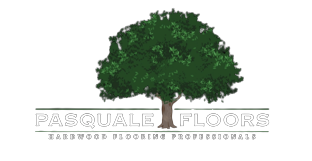
Why do my hardwood floors squeak?
First, don’t worry! It is very common, especially in homes that were built before 1950. Most of the time, the nails are getting loose, and you are hearing them move in between the wood floors and the subfloor, but, there are many reasons your hardwood floors can squeak.
Other common reasons your wood floors squeak:
- Wood floors are installed while not in equilibrium with the subfloor/environment. Ideally your wood floors want to be installed with temperatures between 60-80 degrees with a relative humidity between 30-50%. The subfloor and wood want to be between 7-9% and within 2% of each other. If the wood is installed outside of these specifications, quite often the wood will eventually shrink or expand, at that time, the nails can get loose, thus hearing squeaking.
- Mis-milled flooring can cause the wood to not join properly, causing a poor connection.
- Weak or improper subfloor or voids between the wood floor and subfloor. Example: Particle board is not recommended by the NWFA as an acceptable subfloor, because it’s holding power is subpar, causing more nail movement/squeaking.
- Using the wrong size (smaller) nails that will negatively affect the holding power/strength of the floor.
- Water damage- Absorbing water will make the wood floor/subfloor swell, thus weaking the hold/strength of the nails.
- Lack of adhesive at the time of installation, usually only needed with wood flooring over 4” wide.
- Duct work touching/rubbing against the subfloor.
Common cures for the squeaks in your hardwood floor:
- The best cures are to deal with them from below. Securing the subfloor with glue, nails, screws, shims, wedges. Some clients want to shoot nails and screws into the face of the flooring, which may work, but hiding these large holes, (that are usually unsightly), becomes very difficult.
- Lubricating materials such as talcum powder, WD-40 are sometimes used as a TEMPORARILY fix or minimize squeaking/board noise, BUT this can negatively affect the floor finish, so be very careful.
- Removal of the floor (or sections of a floor) and/or installing a wood floor on top of the existing floor. Using the existing wood floor as a subfloor, then installing new wood flooring over top is something we have done many times and quite often will secure and all 3 areas together, creating a tighter, structurally stronger floor, reducing or eliminating squeaks.
- Drilling small holes and injecting adhesives to spot secure, certain areas can also work.
